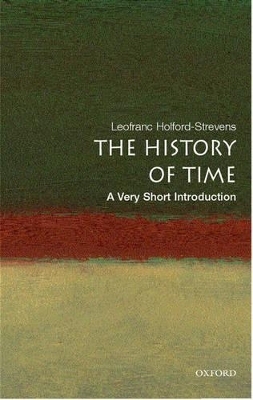
The History of Time
A Very Short Introduction
Seiten
2005
Oxford University Press (Verlag)
978-0-19-280499-0 (ISBN)
Oxford University Press (Verlag)
978-0-19-280499-0 (ISBN)
Leofranc Holford-Strevens explores time measurement and the organisation of time into hours, days, months and years using a range of fascinating examples from Ancient Rome and Julius Caesar's Leap Year, to the 1920s' project for a fixed Easter.
Why do we measure time in the way that we do? Why is a week seven days long? At what point did minutes and seconds come into being? Why are some calendars lunar and some solar?
The organisation of time into hours, days, months and years seems immutable and universal, but is actually far more artificial than most people realise. The French Revolution resulted in a restructuring of the French calendar, and the Soviet Union experimented with five and then six-day weeks. Leofranc Holford-Strevens explores these questions using a range of fascinating examples from Ancient Rome and Julius Caesar's imposition of the Leap Year, to the 1920s' project for a fixed Easter.
ABOUT THE SERIES: The Very Short Introductions series from Oxford University Press contains hundreds of titles in almost every subject area. These pocket-sized books are the perfect way to get ahead in a new subject quickly. Our expert authors combine facts, analysis, perspective, new ideas, and enthusiasm to make interesting and challenging topics highly readable.
Why do we measure time in the way that we do? Why is a week seven days long? At what point did minutes and seconds come into being? Why are some calendars lunar and some solar?
The organisation of time into hours, days, months and years seems immutable and universal, but is actually far more artificial than most people realise. The French Revolution resulted in a restructuring of the French calendar, and the Soviet Union experimented with five and then six-day weeks. Leofranc Holford-Strevens explores these questions using a range of fascinating examples from Ancient Rome and Julius Caesar's imposition of the Leap Year, to the 1920s' project for a fixed Easter.
ABOUT THE SERIES: The Very Short Introductions series from Oxford University Press contains hundreds of titles in almost every subject area. These pocket-sized books are the perfect way to get ahead in a new subject quickly. Our expert authors combine facts, analysis, perspective, new ideas, and enthusiasm to make interesting and challenging topics highly readable.
Leofranc Holford-Strevens, a classicist, received a D.Phil from Oxford University in 1971. The author of Aulus Gellius (1988), and co-author of The Oxford Companion to the Year (OUP 1999), he is a desk-editor with Oxford University Press. He has a long-standing interest in calendars, chronologies, and the calculation of time.
Preface ; 1. Principles of time measurement ; 2. Prehistory and history of the modern calendar ; 3. Weeks and seasons ; 4. Easter ; 5. Other calendars ; 6. Marking the year ; 7. Dividing the day ; Further Reading
| Reihe/Serie | Very Short Introductions |
|---|---|
| Zusatzinfo | numerous b/w line illustrations and halftones |
| Verlagsort | Oxford |
| Sprache | englisch |
| Maße | 111 x 174 mm |
| Gewicht | 143 g |
| Themenwelt | Sachbuch/Ratgeber ► Natur / Technik |
| Geschichte ► Hilfswissenschaften ► Chronologie | |
| Geisteswissenschaften ► Sprach- / Literaturwissenschaft ► Anglistik / Amerikanistik | |
| Naturwissenschaften ► Physik / Astronomie ► Astronomie / Astrophysik | |
| ISBN-10 | 0-19-280499-5 / 0192804995 |
| ISBN-13 | 978-0-19-280499-0 / 9780192804990 |
| Zustand | Neuware |
| Haben Sie eine Frage zum Produkt? |
Mehr entdecken
aus dem Bereich
aus dem Bereich
Buch | Hardcover (2024)
John Wiley & Sons Inc (Verlag)
CHF 198,90
In 3 Volumes
Buch | Hardcover (2023)
World Scientific Europe Ltd (Verlag)
CHF 589,95


